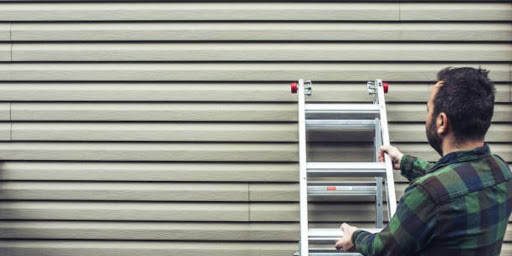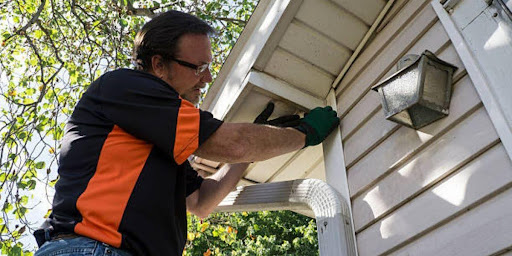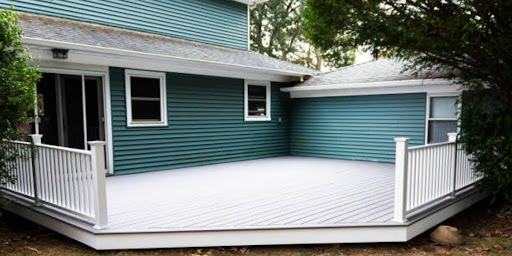Power Articles
Industry Elevating Content
Siding Solutions: Choosing the Right Material for Your Home

PowerArticles
Mar. 4, 2024
When it comes to upgrading your home’s exterior, choosing the right siding material is crucial. Different materials offer various benefits and considerations, impacting the look, durability, and maintenance requirements of your home. From classic options like vinyl and wood to modern choices like fiber cement and metal, each material has its own set of advantages and drawbacks. Understanding these factors can help exterior home improvement companies guide homeowners towards the best siding solution for their needs, ensuring both aesthetic appeal and long-term durability.
Understanding Different Siding Materials
When it comes to selecting the right material for siding your home, there are several options to consider, each with its own characteristics and benefits. Here, we’ll explore four common siding materials: vinyl, wood, fiber cement, and metal.
A. Vinyl Siding
Vinyl siding is a popular choice for many homeowners due to its affordability and low maintenance requirements. It is made from PVC (polyvinyl chloride) resin and comes in a variety of colors and styles, including clapboard, dutch lap, and board and batten.
- Description and appearance:
Vinyl siding is known for its versatility and ability to mimic the look of wood, brick, or stone. It is available in a wide range of colors, textures, and profiles, allowing homeowners to achieve the desired aesthetic for their homes.
- Durability and maintenance:
Vinyl siding is highly durable and resistant to rot, insect damage, and weathering. It does not require painting and can be cleaned with a simple soap and water solution, making it a low-maintenance option for busy homeowners.
- Cost considerations:
Vinyl siding is one of the most affordable siding options available, making it an attractive choice for budget-conscious homeowners. Its low upfront cost combined with minimal maintenance requirements can result in significant long-term savings.
B. Wood Siding
Wood siding offers a natural and timeless look that adds warmth and character to any home. It is available in various species, including cedar, pine, and redwood, each with its own unique grain patterns and colors.
- Description and appearance:
Wood siding is prized for its natural beauty and versatility. It can be installed in various styles, such as bevel, board and batten, and tongue and groove, allowing homeowners to customize the look of their homes.
- Durability and maintenance:
While wood siding is susceptible to rot, insect infestation, and moisture damage, proper maintenance can extend its lifespan. This includes regular painting or staining, caulking gaps and cracks, and ensuring adequate ventilation to prevent moisture buildup.
- Cost considerations:
Wood siding tends to be more expensive upfront than vinyl or fiber cement siding. However, its aesthetic appeal and ability to be refinished or repaired over time may justify the higher initial investment for some homeowners.
C. Fiber Cement Siding
Fiber cement siding is a composite material made from cement, sand, and cellulose fibers. It is known for its durability, fire resistance, and ability to withstand harsh weather conditions.
- Description and appearance:
Fiber cement siding is available in various styles, including lap siding, shingle, and panel, and can be painted or pre-finished at the factory. It closely resembles wood siding but offers superior durability and resistance to pests and rot.
- Durability and maintenance:
Fiber cement siding is highly durable and resistant to rot, moisture, and pests. It requires minimal maintenance, typically only needing to be repainted every 10-15 years to maintain its appearance and protective coating.
- Cost considerations:
Fiber cement siding falls somewhere between vinyl and wood siding in terms of cost. While it may have a higher upfront cost than vinyl, its long-term durability and low maintenance requirements can make it a cost-effective option for homeowners in the long run.

D. Metal Siding
Metal siding, typically made from aluminum or steel, offers durability, longevity, and modern aesthetic appeal. It is available in various finishes, including smooth, embossed, and corrugated, and can be painted or coated for added protection.
- Description and appearance:
Metal siding is sleek and contemporary, offering a clean and minimalist look for modern homes. It is available in a range of colors and profiles, allowing homeowners to achieve their desired aesthetic.
- Durability and maintenance:
Metal siding is highly durable and resistant to rot, pests, and fire. It requires minimal maintenance, typically only needing to be cleaned periodically with soap and water to remove dirt and debris.
- Cost considerations:
Metal siding tends to have a higher upfront cost than vinyl or wood siding but offers exceptional durability and longevity. Its low maintenance requirements and energy-efficient properties can result in long-term savings for homeowners.
Factors to Consider When Choosing Siding
In addition to understanding the characteristics of different siding materials, there are several factors to consider when selecting the right option for your home:
A. Climate and Weather Conditions: Consider the climate and weather patterns in your area to ensure the chosen siding material can withstand temperature fluctuations, moisture, wind, and other environmental factors.
B. Maintenance Requirements: Evaluate the ongoing maintenance needs of each siding material and choose one that aligns with your lifestyle and maintenance preferences.
C. Energy Efficiency: Look for siding materials with good insulation properties to improve energy efficiency and reduce heating and cooling costs.
D. Aesthetics and Architectural Style: Select a siding material and style that complements the architectural style of your home and reflects your personal taste and aesthetic preferences.
E. Budget and Long-Term Investment: Consider the upfront cost, long-term durability, and maintenance requirements of each siding material to determine the overall value and return on investment for your home.

Assessing the Needs of Your Home
A. Inspecting the Existing Structure
Before diving into any siding project, it’s crucial to conduct a thorough inspection of your home’s current exterior. Look for signs of damage, such as cracks, rot, or mold, as these issues may need to be addressed before installing new siding. Additionally, consider the architectural style of your home and how different siding materials may complement or detract from its aesthetic appeal.
B. Identifying Priorities and Preferences
Next, determine your priorities and preferences regarding the siding material. Are you looking for something low maintenance, highly durable, or environmentally friendly? Consider factors such as insulation properties, resistance to weather conditions, and ease of maintenance. Additionally, think about the color, texture, and style options available for each type of siding material.
C. Consulting with Professionals for Expert Advice
Seeking guidance from exterior home improvement professionals can provide invaluable insight into the best siding solutions for your specific needs. These experts can offer recommendations based on factors like your budget, geographic location, and desired aesthetic. They can also advise on any necessary repairs or upgrades to the underlying structure before proceeding with the siding installation.
Making the Decision
Weighing the Pros and Cons of Each Material
Once you’ve gathered all the necessary information, it’s time to weigh the pros and cons of each siding material. Vinyl siding, for example, is affordable and low maintenance but may lack the aesthetic appeal of natural wood or fiber cement. Brick and stone siding offer durability and timeless charm but come with a higher price tag. Consider how each material aligns with your priorities and preferences to make an informed decision.
Evaluating Cost versus Longevity
When selecting a siding material, it’s essential to consider the long-term costs versus the initial investment. While some materials may have a higher upfront cost, they could save you money in the long run due to their durability and low maintenance requirements. On the other hand, cheaper options may require more frequent repairs or replacement, resulting in higher overall expenses over time.
Considering Environmental Impact and Sustainability
Finally, take into account the environmental impact and sustainability of each siding material. Opting for eco-friendly options such as fiber cement, reclaimed wood, or recycled vinyl can help reduce your carbon footprint and contribute to a healthier planet. Additionally, consider the energy efficiency of the siding material and its potential to improve insulation and reduce heating and cooling costs. By carefully evaluating these factors, you can choose a siding solution that not only enhances your home’s curb appeal but also aligns with your values and environmental goals.

Conclusion
In conclusion, selecting the appropriate siding material for a home is crucial for its durability, aesthetics, and overall value. By weighing factors like cost, maintenance requirements, weather resistance, and environmental impact, exterior home improvement companies can guide homeowners towards the best siding solution for their specific needs. Whether it’s vinyl, wood, fiber cement, or another material, each option has its pros and cons, and understanding these distinctions is essential for delivering satisfactory results to clients. Moreover, prioritizing quality installation and ongoing maintenance can prolong the lifespan of the siding, ensuring homeowners’ satisfaction and enhancing the reputation of the company.
Published By
PowerArticles
Mar. 4, 2024